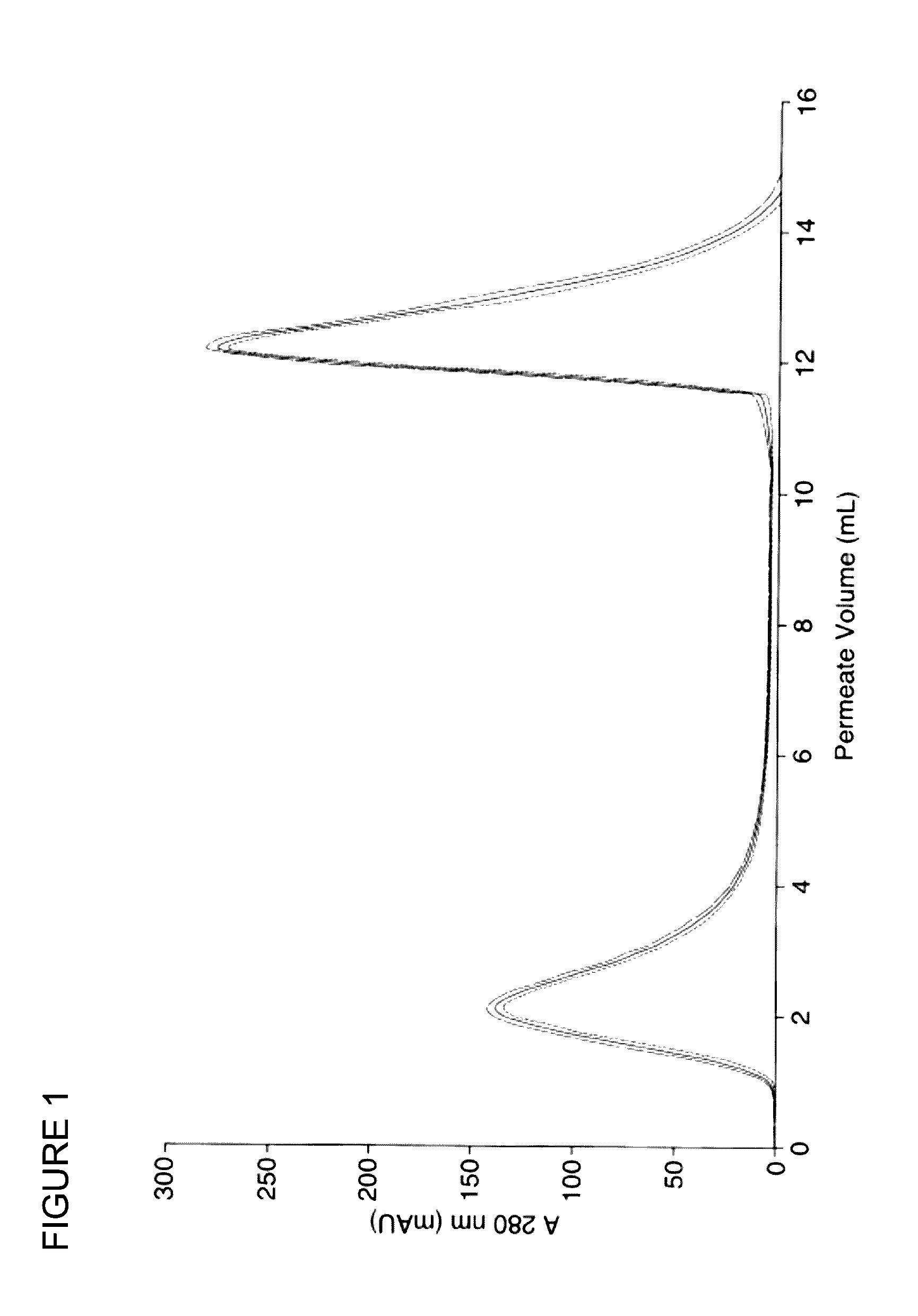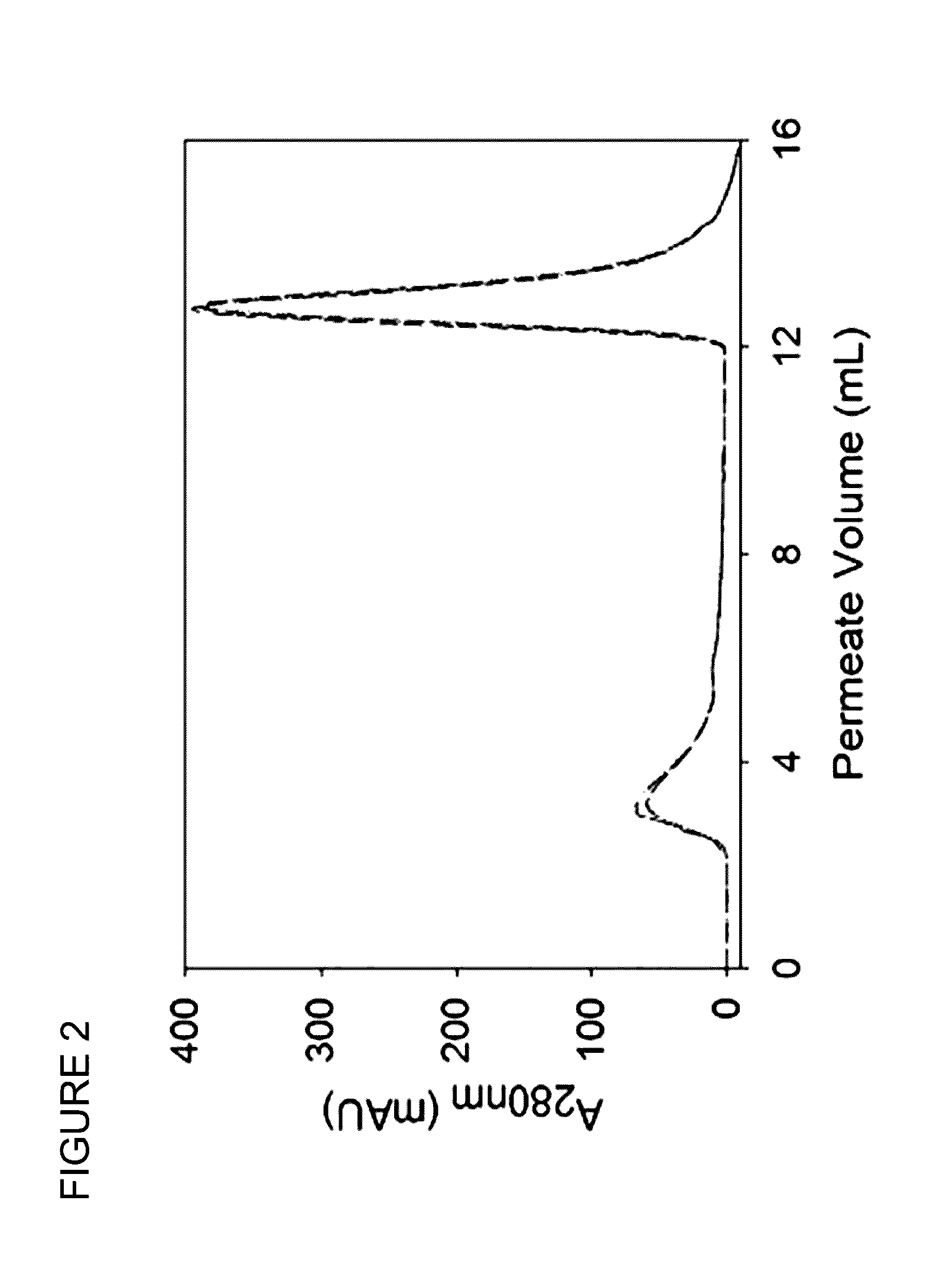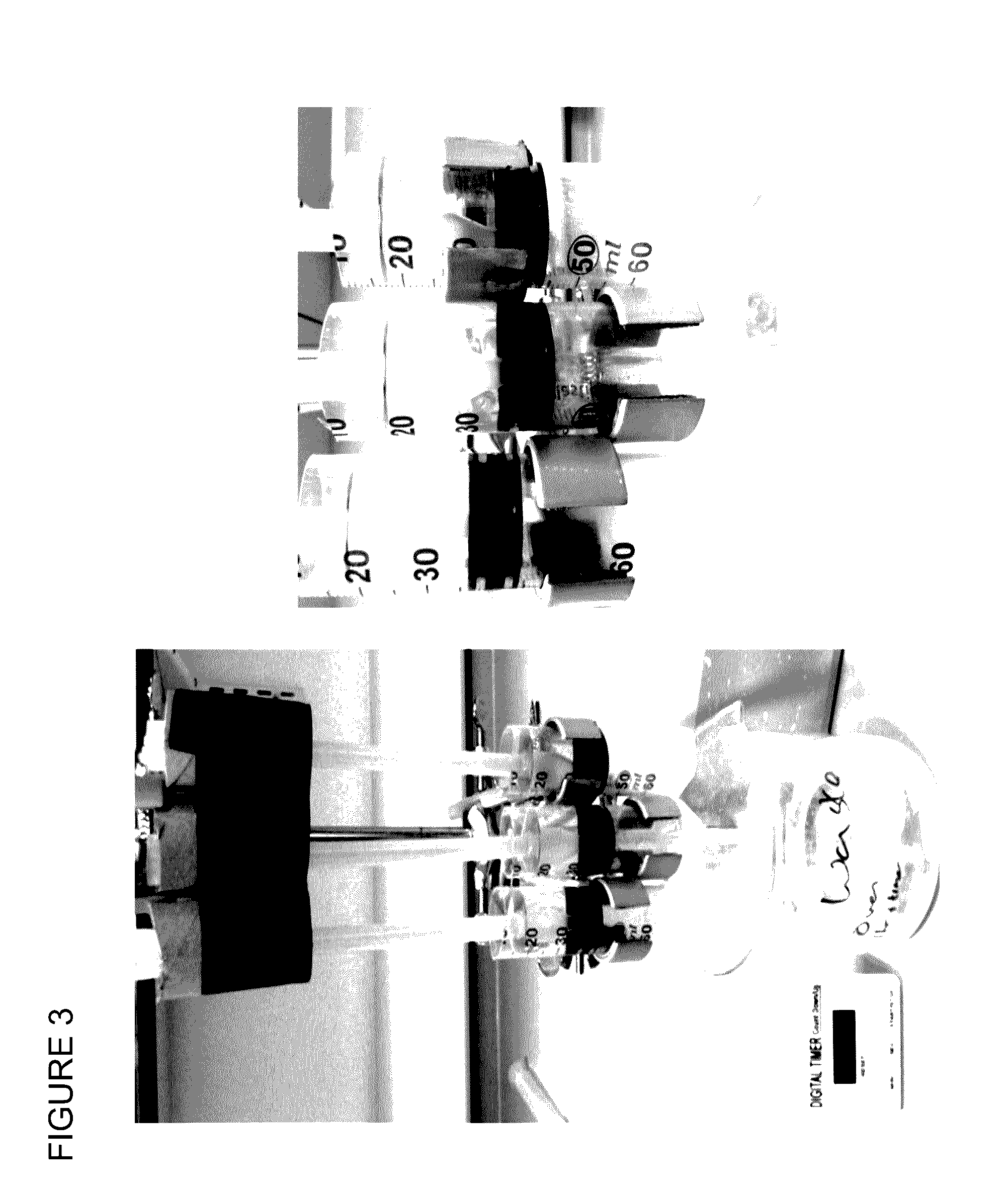Chromatography medium
- Summary
- Abstract
- Description
- Claims
- Application Information
AI Technical Summary
Benefits of technology
Problems solved by technology
Method used
Image
Examples
example 1
Chemical Modification by Convection
[0220]A cellulose acetate nanofibre disc was prepared as above and modified chemically to yield anion exchange surface functionality. A disc having a thickness of 0.188 mm and total volume 0.1 mL was modified as set out below.
[0221]The nanofibre disc was packed into a filter holder prior to derivatisation. Deacetylation was carried out using 30 mL of 0.1 M NaOH in DI water:ethanol (2:1), which was pumped through the disc in a cyclical manner using a Dionex, P680 HPLC pump at a rate of 25 mL / min for 24 hours. The disc was then rinsed with 300 mL DI H2O at a rate of 25 mL / min. Anion-exchange surface functionality was then imparted by cycling 20 mL warm (40° C.) 15% 2-chloro-N,N-diethylethylamine hydrochloride 99% (DEACH) aqueous solution through the disc at 40 mL / min for 10 min. The disc was then removed from the filter holder housing and left for 30 seconds to drip dry before placing into 20 mL hot (80° C.) 0.5 M NaOH in a 50 mL sample tube on a sha...
example 3
Chemical Modification by Diffusion
[0223]A cellulose acetate nanofibre disc was prepared as above. A disc having a thickness of 0.188 mm and total volume 0.1 mL was modified as set out below.
[0224]The disc was placed in a 50 mL sample tube containing 30 mL 0.1M NaOH in DI water:ethanol (2:1) for 24 hours on a laboratory shaker table to deacetylate the cellulose acetate to form regenerated cellulose. The disc was then rinsed thoroughly in 10×30 mL volumes of DI water for 5 minutes each on the shaker table. Anion-exchange surface functionality was then introduced by placing the rinsed disc into a sample tube with 20 mL warm (40° C.) 15% 2-chloro-N,N diethylethylamine hydrochloride 99% (DEACH) aqueous solution for 10 min. The adsorbent was removed and allowed to drip dry for 30 seconds before being placed in 20 mL hot (80° C.) 0.5M NaOH in a new sample tube on the shaker table for 10 min. Finally the disc was rinsed in multiple volumes of DI H2O and left to dry before use.
example 4
[0225]An experiment was carried out as set out in Example 1 above, except that the cellulose acetate nanofibre disc used had a thickness of 0.376 mm and total volume 0.2 mL.
PUM
| Property | Measurement | Unit |
|---|---|---|
| Temperature | aaaaa | aaaaa |
| Temperature | aaaaa | aaaaa |
| Length | aaaaa | aaaaa |
Abstract
Description
Claims
Application Information
 Login to View More
Login to View More - R&D
- Intellectual Property
- Life Sciences
- Materials
- Tech Scout
- Unparalleled Data Quality
- Higher Quality Content
- 60% Fewer Hallucinations
Browse by: Latest US Patents, China's latest patents, Technical Efficacy Thesaurus, Application Domain, Technology Topic, Popular Technical Reports.
© 2025 PatSnap. All rights reserved.Legal|Privacy policy|Modern Slavery Act Transparency Statement|Sitemap|About US| Contact US: help@patsnap.com



